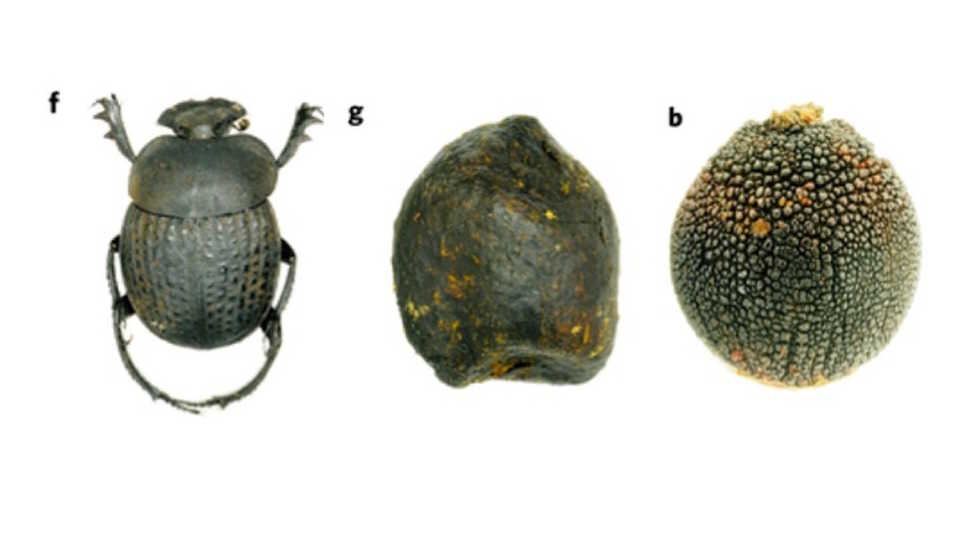Science News
Duped Dung Beetles

Evolution is amazing! The ways in which organisms adapt to and thrive in their environments can be astonishingly impressive.
Take the flowering plant Ceratocaryum argenteum in South Africa. Its leaves and flowers are unpalatable to local animals, and its seeds are too hard for small mammals and birds to eat. So how does it spread its seeds?
According to a paper published this week in Nature Plants, the plant has evolved a strategy that tricks dung beetles into thinking that its seeds are, well, dung.
Researchers were curious about the scent and appearance of the C. argenteum seeds. They smell like poop to the human nose. Why? Other species in the same family don’t give off such a stench. In addition, the seeds look like feces. Small local antelope feces, to be specific. Could the seeds actually be a form of mimicry by the plant?
There are a number of flowers, especially orchids, that have evolved to look like other plants or insects. Although we know of numerous examples of floral mimicry to attract pollinators, scientists have found very little evidence of mimicry that helps to disperse seeds. So the team set up camera traps in the De Hoop Nature Reserve to observe what was going on. They didn’t see any small mammals (especially those known as scatter hoarders) gathering the seeds. But they were lucky enough to catch dung beetles in the act. These beetles are too small to activate the camera traps; however, three dung beetles were serendipitously filmed gathering seeds, then rolling them away.
Next, the team marked about two hundred seeds and placed them at different places in the reserve. About half of these were removed and later found buried a small distance from their original locations. In this study, several beetles were observed rolling and burying the seeds. The seeds were rediscovered unharmed. The authors of the study wrote that these dung beetles didn’t realize the true identity of their “poop” until they buried it: “The deception is ‘discovered’ only when the dung beetle attempts to eat, or oviposit within, the hard seeds.” (Usually dung beetles eat the dung or lay their eggs inside it.) As soon as the dung beetle realizes the deception, it loses interest in the fake “poop,” but the buried seeds are now perfectly situated for germination!
Finally, the researchers analyzed the volatile chemicals given off by the seeds and found that their concentration and composition were similar to those emitted from local antelope’s dung. Case closed. By mimicking antelope dung, C. argenteum seeds are likely tricking dung beetles into planting them without giving the industrious insects any reward.
Image (beetle, dung, and seed): Nature Plants, ISSN 2055-0278 (online)